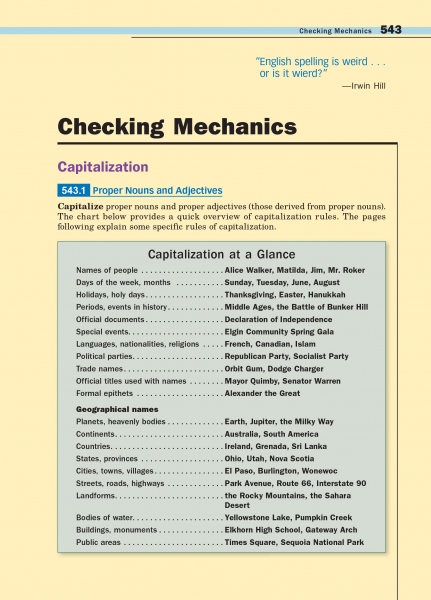Page 543 from

Start-Up Activity
Ask what the word "mechanics" means to students. Most probably imagine people who fix automobiles. Someone might mention the word "biomechanics," which relates to the study of how living things move. Let them know that this chapter doesn't deal with fixing cars or studying movement but does focus on fixing the "nuts and bolts" of language:
- Capitalization
- Plurals
- Numbers
- Abbreviations
- Spelling
When these mechanical parts are right, nobody notices. When they are wrong, the writer just might have a "screw loose." Encourage students to study these pages and return whenever they need to fix the working parts of their own writing.
Think About It
“Ladies, if you want to know the way to my heart . . . . good spelling and good grammar, good punctuation, capitalize only where you are supposed to capitalize; it's done.”
—John Mayer

Start-Up Activity
Ask what the word "mechanics" means to students. Most probably imagine people who fix automobiles. Someone might mention the word "biomechanics," which relates to the study of how living things move. Let them know that this chapter doesn't deal with fixing cars or studying movement but does focus on fixing the "nuts and bolts" of language:
- Capitalization
- Plurals
- Numbers
- Abbreviations
- Spelling
When these mechanical parts are right, nobody notices. When they are wrong, the writer just might have a "screw loose." Encourage students to study these pages and return whenever they need to fix the working parts of their own writing.
Think About It
“Ladies, if you want to know the way to my heart . . . . good spelling and good grammar, good punctuation, capitalize only where you are supposed to capitalize; it's done.”
—John Mayer

